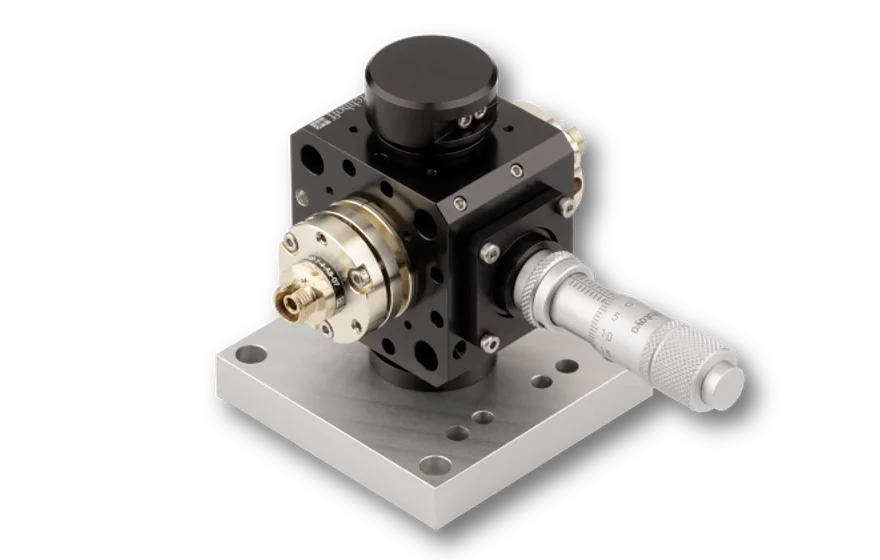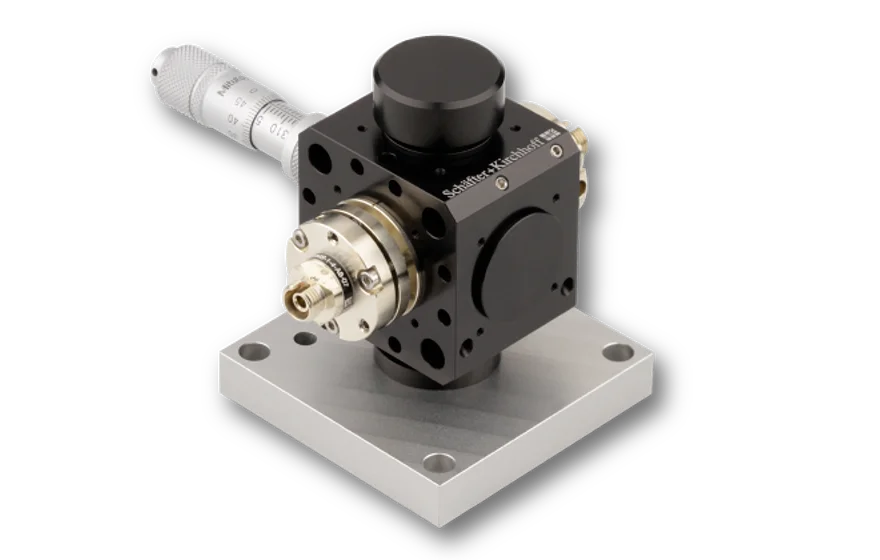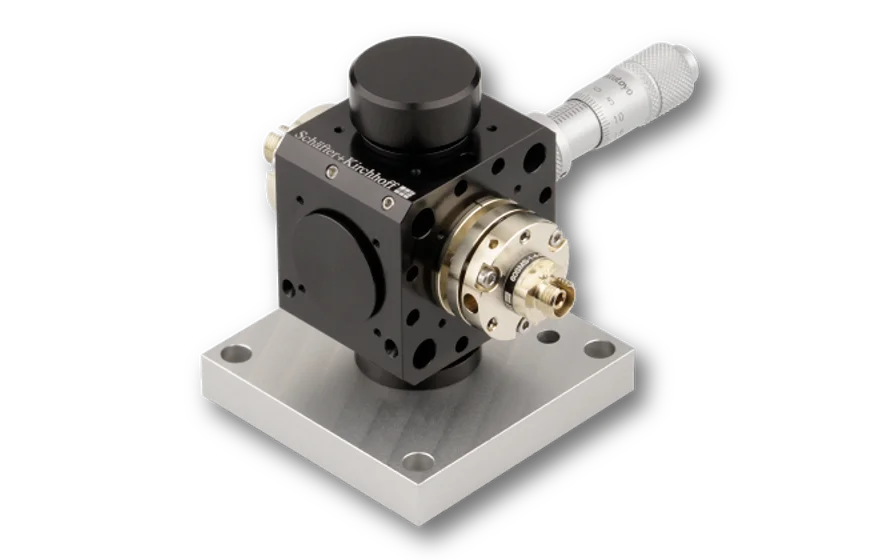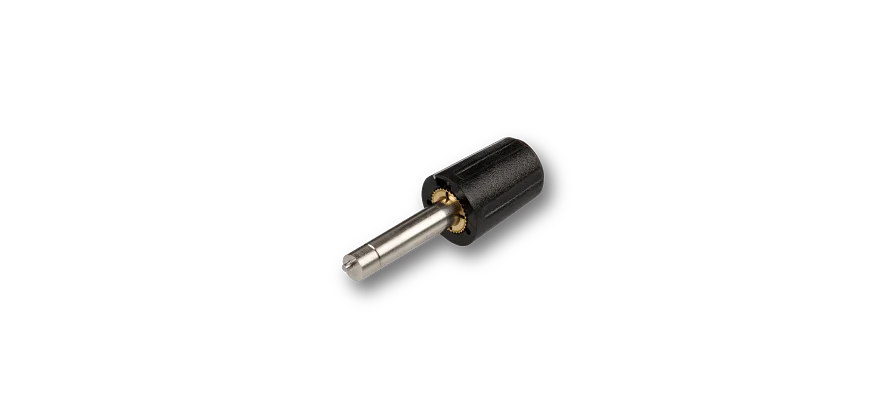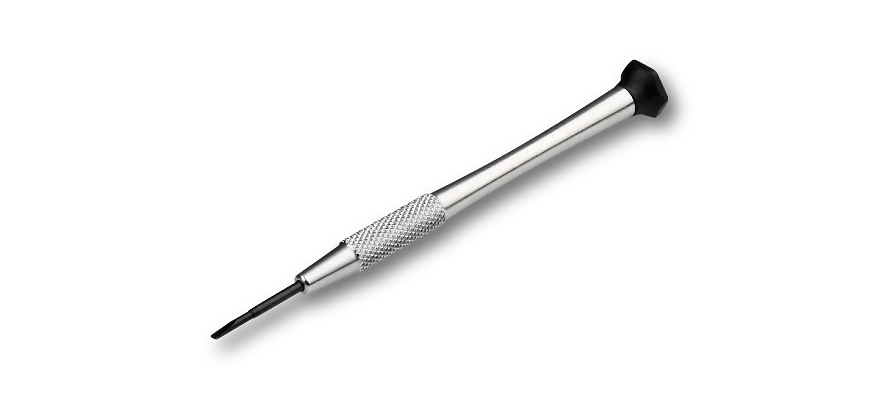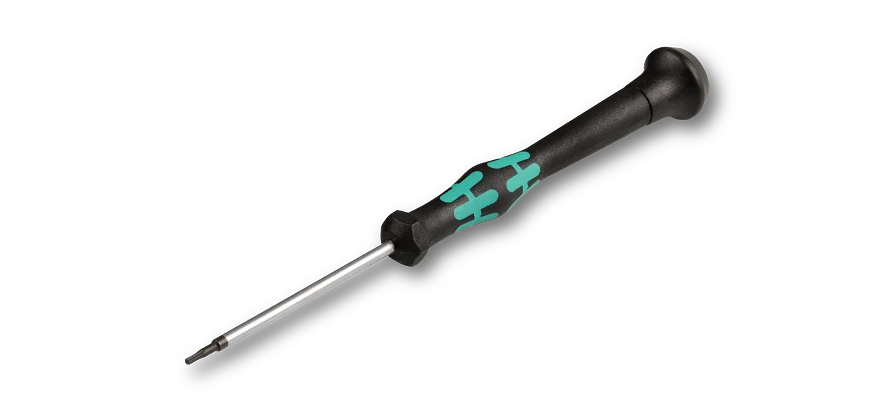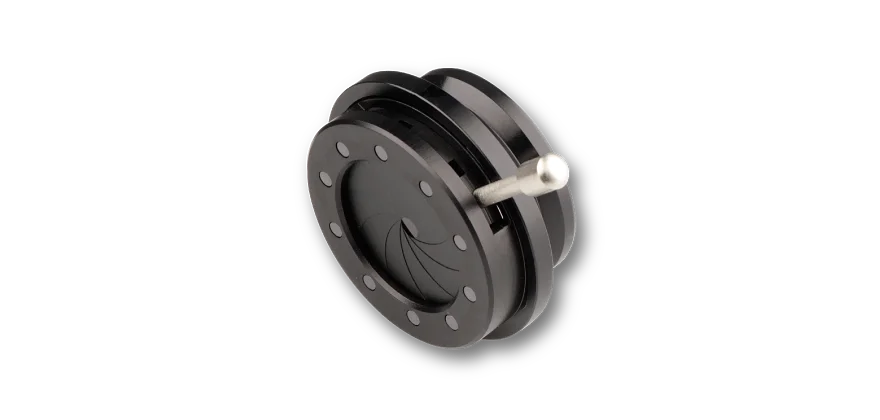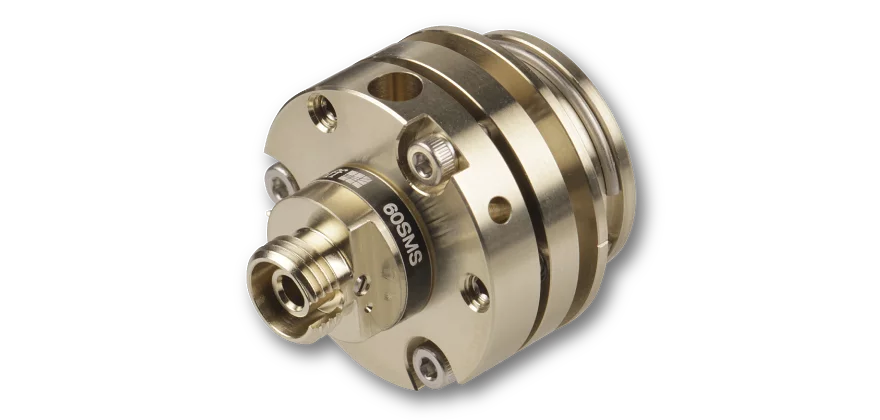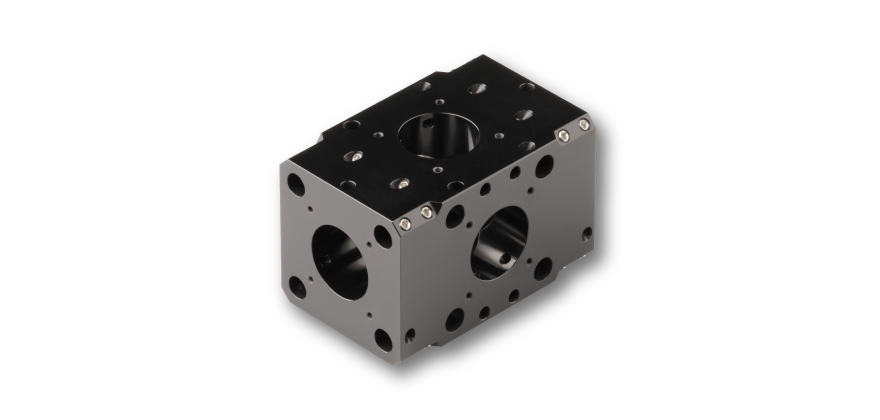Laser Attenuator 48AT-0 is used for reproducible and precise reduction of the power output by the laser. The collimated laser beam is constricted by a precision ball transported by a scaled micrometer screw. The subsequent single-mode fiber coupling is used as a mode filter.
This mechanically stable attenuation method allows the precise and reproducible setting of the laser power output over a wide range (typically 1.5 to > 60 dB). Unlike a power regulation by modulation of the laser current, the wavelength and polarization status of the laser beam are preserved.
A reproducible power attenuation is only assured for singlemode fibers that have a Gaussian intensity profile. In case of a multimode fiber not only the power is attenuated but also the intensity distribution ex fiber is affected.
Fiber Couplers
A fundamental component of the Fiber-to-Fiber Coupler is the Laser Beam Coupler, which is the input into the opto-mechanical unit collimating the input radiation and, finally, couples the radiation back into the second fiber cable. The stability of the total Fiber-to-Fiber Coupler is determined by the stability of the laser beam coupler.
Depending on the choice of lens type (monochromatic or achromatic) within the Laser Beam Couplers, the system can either be used for a single wavelength or for a wavelength range.
Coupling focal length
The best focal length for the 60SMS Laser Beam Couplers used in these systems is f' 11 - 12 mm. If the effective numerical apertures of the two fiber used with this system are different, you have to use two Laser Beam Couplers with different focal lengths.
Configuration
For selecting the 60SMS Laser Beam Couplers please refer to the 60SMS Laser Beam Couplers site.
